Was America Great When It Burned Native American Babies? (Audio and Transcript)
Benjamin Madley, a history professor and author, joins Truthdig Editor in Chief Robert Scheer to talk about a too-little-known part of California's history: the government-supported massacres of indigenous people.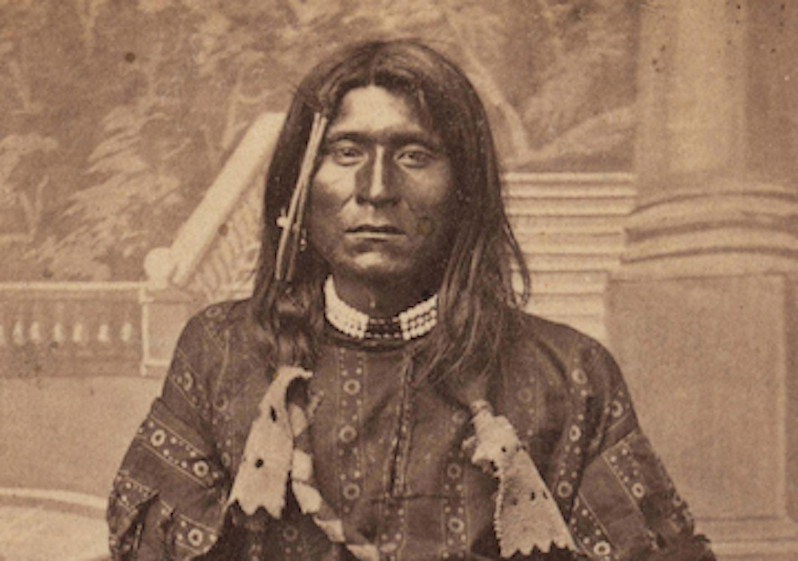
Listen to the full interview below:
The full transcript of the conversation is below:
RS: Hi, I’m Robert Scheer, and this is Scheer Intelligence, my podcast in collaboration with KCRW featuring American originals who supply the intelligence. My guest today is Benjamin Madley, who is a history professor at UCLA and author of the recent book, An American Genocide: The United States and the California Indian Catastrophe, 1846-1873. Benjamin Madley, welcome.
BM: Robert, it’s a pleasure to be here.
RS: So let me ask you, first of all, why this period that your book deals with, the period from 1846 to 1873? Why California, and why did you write, devote so much of your research and life so far to this topic?
BM: My interest in this project goes way back to when I was a boy finding arrowheads on our family’s ranch in northern California. And when we moved back from Siskiyou County to LA, I started to attend high school with a Plains Indian warrior for a mascot. And I knew, being familiar with Karuk people in the area where I’d been a boy, that this kind of regalia was not the regalia, is not the regalia of California Indian people. And at the same time, anthropologists and archaeologists were beginning to come to campus looking at Indian village sites, Tongva village sites right on the spot where I was taking my German classes. And so I began to wonder, where are all the Indian people? Later, as an undergraduate at Yale, I wrote about the destruction of Tasmanian aborigines by British colonists in the early 19th century. And at Oxford as an MA student, I wrote about the destruction of Nama and Herero people in what was then German South-West Africa. So when I returned to graduate school after a number of years away, returning to Yale, I thought that I ought to write about the vanishing or the killing off of California Indian people.
RS: So let me make a point, by the way, that the An American Genocide by Benjamin Madley, published by Yale University Press. And it’s really a substantial commitment on their part. This is a major work and a difficult undertaking. But you had a personal history, I believe, and when you came to my class at USC to speak about this, you mentioned your father was working in this field and that’s why you were up there and–yeah.
BM: Yes. So when I was a boy, living in the log cabin on the family ranch, my father was working with Kuruk people as a psychologist. So I was–
RS: Was he in the government, or he was–
BM: He was working for the tribe, right. So I was getting exposure to the ongoing conflicts between colonists–us–and the indigenous people of California. Conflicts over what should be done with the Klamath Dam, which was leading to ever-increasing fish kills and ever-decreasing salmonid populations on the river. Timbering, which was putting effluents into the river that were making it difficult for fish to survive. The gold mine in our local town, which was polluting while at the same time creating the economic mainstay for the town. So those issues were very obvious and real. They weren’t hidden away in 19th century histories; they were present, they were visible.
RS: So at a point in your youthful experience, when, at least in an earlier culture, most kids would be cowboys killing Indians–in an earlier history, that’s when I grew up–you actually were in a position because of your father’s occupation to understand that we were dealing with humans, and complex humans, with different aspirations. We now have another cartoon image of the Indian. We have the drunken Indian that we see in urban centers, but we have also the idea of the prosperous Indian because of gambling, casinos, and so forth.
BM: Indeed.
RS: So that’s quite a journey from the view of the Indian as savage even in our–I shouldn’t say even; particularly in our Declaration of Independence, which we gloss over–to what you describe as, really, if it’s genocide it’s not kidding around. So what we mean by genocide is the deliberate effort to exterminate a people because their very existence is inconvenient to the plans of others, imperial plans and what have you. And now we’ve gone to a view where, oh, we have, you know, Indians are somehow doing quite well because of a loophole in the law, and they can have gambling, casinos, and so forth. So let me go back to the genocide image. You have taken the burden of making this strong case. And what has been the response so far, and what are the disputes about whether this is genocide, and what is the value of the term?
BM: Well, first of all, let’s talk about what I mean by genocide. Because there are a wide variety of academic definitions of the term. But I’ve chosen in this book specifically to use the 1948 United Nations Genocide Convention definition, because that is the definition that almost all nation states in the world now subscribe to, and because it is a definition that, unlike the academic ones, actually has teeth. There have been some 46 individuals now prosecuted and convicted using terms from the UN Genocide Convention by the International Criminal Court for Rwanda, by the International Criminal Court for the former Yugoslavia, and for the International Criminal Court at The Hague. So this is an international legal treaty with a growing body of international case law that supports it. So using this definition, it serves two purposes. First, it provides and internationally recognized rubric for evaluating cases of genocide. But second, by using it in an academic context, I hope that I’m actually strengthening what is a growing international human rights regime that can be enforced in part using the UN Genocide Convention. In fact, there are ongoing cases even as we speak today in The Hague, in the ICC and in the Extraordinary Chambers in the criminal courts of Cambodia, which is commonly known as the Khmer Rouge tribunal. So this is not something that’s purely an academic concern; this is a real-world, international human rights regime that I hope I’m supporting, in part, with this work.
The other thing that you mentioned that is important–well, frankly, there’s a lot at stake. This is a major issue for the hundred and fifty thousand people who identify themselves as California Indians in this state. And they see, many of them see a relationship between the genocide and ongoing issues of historical trauma that are related to high rates of suicide, high rates of domestic violence, and other health issues that impact California Indian people today.
RS: I’m talking to Benjamin Madley, who’s the author of a really fascinating book called An American Genocide. You know, I prepared before when you came to my class, and now I’ve reread good chunks of it for this discussion. And I was amazed at how interesting it is. The detail, the devil is in the details. And you realize that the murderers, the people committing genocide, could pass as normal people; could be supported by normal-sounding politicians. And you know, to my mind, it sort of brings up the whole question of dropping the atomic bombs on Hiroshima and Nagasaki. You know, defended by people at the University of California, where you now teach; designed, actually, to be in the daytime and maximize the amount of killing of children, actually, on their way to school, to have the maximum impact to justify the enormous cost of developing these bombs, you know. And here we have this example where, what, the indigenous people were made the devil; they were made barbarians; they were made the scourge of civilization because they were anti-modern. Isn’t that sort of the thrust? They got in the way of plans for development, for growth, and they were inconvenient.
BM: I don’t think they were necessarily anti-modern. There was a tremendous amount of dehumanization of California Indians that was woven through all of the rhetoric, not only the rhetoric of politicians, but the rhetoric of journalists. People who did your job in the mid-nineteenth century in California. And the state officials’ endorsement of genocide in California was very thinly veiled. In 1851, California governor Peter Burnett declared–and I’m going to give you a quotation, because I think it’s an important one–he declared that “a war of extermination will continue to be waged until the Indian race becomes extinct.” And this was not a private statement or a hidden statement; this was in his annual speech to the joint houses of California’s legislature. Two years later, U.S. Senator John Weller, who became California’s governor in 1958, went further: he told his colleagues in the United States Senate that California Indians, and I quote, “will be exterminated before the onward march of the white man, arguing that the interest of the white man demands their extermination.” This kind of rhetoric was everywhere. It was popping up in private letters that I encountered, in journal entries, and in editorials in newspapers all the time.
RS: So why–you know, your book deals with this period in CAlifornia between 1846 and 1873, in which you argue that the population of Native Americans–actually, you call it “Indian population,” so we can explain the difference there–goes, what you said, probably from 150,000 to 30,000. That’s sort of, that’s wiping out a people. Why those years? Why 1846 to 1873, why California?
BM: When I began my research I was, like all graduate students, overly ambitious. And I thought that I could tell this complete story, from the arrival of the Spaniards in San Diego in 1769 up until the occupation of Alcatraz. That was my original vision. And I decided, as–
RS: The occupation of Alcatraz was by Native Americans trying to make a political point, yeah.
BM: Yes, in the late 20th century.
RS: Yeah, for those who don’t know that.
BM: And what I did was to start in the middle, which is something that historians often do. And I found that there was a tremendous amount of material in those early years of U.S. occupation, 1846 to 1873. And as I moved into the details, I found that the numbers of people who had been killed, and the level of state involvement, the level of genocidal intent, was far beyond what previous historians had described. But it is important to note, as I describe in the first chapter of the book, that there is a tremendous population crash between 1769 and 1846. Even conservative estimates say that there were over 300,000 California Indians at first contact, and that those numbers had plummeted to perhaps something like 150,000 in the years just before the U.S. occupation.
RS: Tell me the central story. What drove the genocide in California? Which, by the way, until I became familiar with you and your work and your book, I hadn’t heard that term used for that period. So tell, what drove it? What made these people so inconvenient? Where’s the bloodlust?
BM: There were always people who stood up, white people who stood up for California Indians and who advocated more humane treatment. So for example, there were supposed to be a number of reservations, over seven percent of the total state, set aside for California Indian people, and these agreements were enshrined in 18 separate treaties between California Indian leaders and representatives of the federal government. But members of the U.S. Senate repudiated those treaties so that what happened was that there were only small, temporary, military reservations. And this was central to the jeopardizing of California Indian safety. They were not recognized as wards of the federal government, because the land had not been patented as federal land; the U.S. army did not have the right, under the laws of the United States, to arrest and prosecute California citizens who committed crimes against California Indians. And this also led to conflicts among and between state and federal officials over jurisdiction on these reservations. So I don’t think that it is an exaggeration to say that the federal government made it very dangerous to be a California Indian.
RS: But what drove it? I mean, usually when we refer to genocide historically, it’s because a certain group of people, whether it’s Jews in the time of World War II or before, or Armenians in the Turkish genocide, or others, have been singled out for scapegoating as an excuse to explain away other problems. And you know what drove this?
BM: I would say three factors: greed, fear, and hate. Greed because most of the people who rushed into California between 1848 and 1860–and there were over 300,000 of them; this is the largest mass migration in the 19th century history of the United States–most of them came to California to get rich and to get rich quickly. They saw California Indians as impediments to that rapid acquisition of wealth. Fear, because fearing Indians was very much part of white culture in mid-19th century America. So the people who were immigrating to California had been primed to be afraid of California Indians. This came from fiction, popular literature, and from journalists. So the lens through which they saw California Indians was already pre-calibrated with fear. And that meant that they arrived in California very heavily armed, and the federal government subsidized the arming of colonists headed west. And finally, hate; there is a very long tradition in this country of hating Indians that goes back to early settlement in the colonial period, in which Puritan religious leaders characterized indigenous people as devils and as demons. And that tradition of Indian-hating was quite mature and robust by the time people started to arrive in California in large numbers.
RS: I’m talking to really an unusual academic, Benjamin Madley, who teaches history at UCLA. While he holds to all of the great academic standards of documentation and so forth, there’s a real passion and a sense of righting wrong in this book, An American Genocide, that actually raises a very fundamental, profound criticism of the entire American experience. Because if, after all, right at the heart of that experience we had genocide, you have to come to grips with it. What kind of people, God-fearing people, would engage in the wholesale elimination of another people? And one way you accept that, as you’re living through it, is to think of them as “savages.” Now, your father was a man of the mind, right? And why don’t you tell us a little about your father and to what extent he inspired this work, and helped you understand the complexity of a people that we committed genocide against?
BM: One of the things that was curious to me as a child was the great wealth disparity that I saw even in our small town of Happy Camp, between the indigenous people, whose land this obviously was, and all the newcomers. And in talking to native people that my father introduced me to, I could see that Karuk people had a fundamentally different kind of attitude toward private property, toward the ownership of land, toward the ownership of resources, than the newcomers did. People arrived to work at the mine in Happy Camp, they worked there for a while, and then they left. But for Karuk people, the land and the places on the land were indivisible from their own identity.
If you’re Jewish, you can go to a synagogue in many different places. But if you’re Karuk, you need to go to particular places in the land to perform particular rituals. So the avenues of access to the divine are very much rooted in specific places: a particular creek, a certain rock, a particular mountain, a special grove of trees. That attitude was difficult for a little boy to understand, but it was marvelous to me; it amazed me.
RS: You are from a Jewish background?
BM: Yes.
RS: Yeah, so you’re not [laughs] bringing this up in a negative way, but–and I gather your father, then, was trying to understand another culture.
BM: Right. It also occurred to me as a boy that northern California Indian people had endured a similar kind of catastrophe to European Jews. And that they were, like the survivors of the Holocaust, trying to put the pieces back together, and also trying to make sense of a cosmos in which this kind of catastrophe could be possible. In which God, or the divine, could allow such a thing to happen to his children.
RS: One important reason to read your book is as a corrective to this history that we pay lip service to, of you know, the city on the hill that Ronald Reagan talked about; the unique American experience. And here we’re in a presidential election where Donald Trump wants to make America great again, and Hillary Clinton says it’s always been great and is great, and so forth. And then you come along with a book–I don’t know why I’m making, I don’t mean to make light of it; genocide is genocide–but you come along with a book in this season of American celebration once again, saying yes, but in the middle of this great experiment, and the creation of the city on the hill, there was something called genocide.
BM: One of the issues that comes up for all of us, if we call something genocide in the history of the United States, something driven by state and federal authorities quite explicitly and intentionally, is that we have to rethink the assumption that the United States is exceptional. So this challenges the idea of American exceptionalism.
RS: You have mentioned journalists now several times as sort of culprits in this; now we can add government officials, political leaders. And I think it’s important to make that point, because otherwise reading a lot of the specific incidents in your book, one could think, oh, there’s that crazy guy and there’s that killer and there’s that hired gunman, you know. And there are a lot of nasty killers that were recruited by companies, by landowners, by others, to terrorize Indians. And yet they were backed by respectable society. So let’s begin with journalists. Tell me about the reporting on all this.
BM: These things, whether they were massacres, murders, or whole killing campaigns that went on for months, were hidden in plain sight. You need only start by reading the many newspapers of the period to read about these things in detail. U.S. army officers’ reports were often published in newspapers; militia officer reports were likewise published in newspapers; and eyewitnesses, whether deploring the killing or celebrating it, routinely wrote in to the newspapers to report these things, and editors then commented on them. I don’t think it’s an exaggeration to say that state legislators assembled and then expanded a state-sponsored killing machine. California governors called out or authorized no fewer than 24–that’s two dozen–state militia campaigns against California Indian people, that killed at least 1,340 of them. That state legislature played a key role in the killing campaign, by then funding these operations; they raised over $1.51 million to fund them. The federal government, in turn, then supported the state of California by refunding to the state almost all of the money that the state spent on the killing. At the same time, the U.S. army was often involved in killing or massacring California Indians, from 1846 when they first massacred California Indians at the Sacramento River, under John C. Fremont and Kit Carson, and only concluding in 1873 when they ended the Modoc War by decapitating four of the leaders and sending their severed heads to Washington.
RS: Not to pick the most sensational aspects from your book, but these journalists, these political figures, you’re saying they were aware of how barbaric.
BM: Oh, absolutely.
RS: So give us some, what did they know in real time and celebrate? What kinds of acts? Which, after all, were not just against Indian warriors, but their children, their wives.
BM: Yes, newspapers reported on things that I think would almost be censored now, because they were so incriminating. Newspapers reported babies skewered on bayonets by regular U.S. army soldiers. They reported on people throwing children into bonfires. They reported on the extermination of entire Indian communities, wholesale. These are things that startled me; they staggered me. I cried many times sitting in front of the microphone reader in the basement of the Berkeley library, doing my research. I couldn’t believe that these things actually happened. But they’re true, and the steady repetition of the killing and the sadism, and its routine reporting, made it all the clearer to me that there was broad-based support for something that is difficult to even imagine could happen.
RS: So someone sitting in Oakland, or Los Angeles, Sacramento, who had a job teaching or being a banker or being an editor of a newspaper or a reporter, they knew about the bayoneting of infants, of babies?
BM: If they read newspapers. If they talked to people who served in militias, and thousands of men served in militias.
RS: What paper would they have opened up, with their breakfast in the morning in Pasadena, and what would they have read?
BM: Well, one thing that you have to understand about California between the 1840s and 1870s was the tremendous number of newspapers. San Francisco had multiple competing newspapers; small towns that now hardly merit mention in the news had their own newspaper. Columbia, Volcano, Placerville–these places all had one or more newspapers.
RS: The Nevada City Nugget, I think, was–
BM: Nevada City had multiple newspapers in its heyday. And the way that newspapers worked then was that they often republished each other’s stories; there was no AP wire then, but newspaper editors routinely subscribed to a dozen or more newspapers, and they then reprinted stories that they read there.
RS: But what about the most shocking stuff that you talked about before, throwing babies into fires and bayoneting and so on? Would that have been commonly, knowledge that was commonly available?
BM: Yes. Often, the reports consist of only a line or two. They tell us the number of people who were killed, where they were killed, and perhaps why they were killed. In most instances, we don’t get those really gruesome details. But I’ll tell you, I had to cut a lot of detail out of this book. Believe it or not, it was much larger before we began to trim it down, and a lot of what I removed were those gruesome details that I thought didn’t need to be repeated in every instance.
RS: What I’m trying to understand is, was this a case, again, that “the other” were thought to be subhuman and not warranting respect? I mean, and in terms of religion, it would seem to be a specific denial of what, say, Jesus Christ was about. After all, missionaries had started this practice, and here was Jesus telling us about “the other” and the Good Samaritan and Luke and so forth. How did they handle all this? How did they handle this dismissal of the human quality? I mean, to throw a baby into the fire? In America? That’s not part of our history that many people have talked about, including other respectable historians.
BM: One of the things that I take away from this book, which was very difficult to write, is that there is no safe level of racism. Racism is the fundamental idea that has to be ingested in some shape or form by the killers in order to carry out mass murder, in order to carry out genocide. But genocide is too big a project to be extemporized by individuals unconnected to a state or some larger group and organizing principles. What we see in California is that the state, both state and federal officials, utilized that rhetoric of dehumanization in order to convince soldiers, militiamen, and vigilantes that what they were doing was not only proper, but was morally laudable. So U.S. army officers who carried out and directed massacres were not punished; rather, they were rewarded and promoted and pushed up in the ranks. That is part of what is necessary to make a genocide happen. Because individuals, most of us, are incapable of doing this kind of thing over and over again unless there is an authority and an ideological framework that rewards and supports us for doing these things.
RS: So let’s just be clear about one thing, because this came up in the German genocide. You know, who were the good Germans and did they know? And there were plenty of people that said no, we didn’t know; if we had known, we would be shocked, and so forth. And of course that turns out not to be the case; if you didn’t know, it’s because you didn’t want to know. They clearly knew people were being rounded up. So what about the good Californians?
BM: There were people in all walks of life who protested the horrors of the genocide that they saw all around them, and who took steps to try to stop it. Officers from the Office of Indian Affairs, United States army officers, even militia commanders; they saw that what was happening was wrong, and every instance where I found white people objecting to the genocide, I tried to underscore and put them into the book, in part because I wanted to reward them for taking what was a dangerous stand, but also in order to clearly mark the fact that there were people who knew, then, that this was wrong. There was a U.S. army officer who told the militiamen that if they came to the Fort Crook area, that he would shoot them; that they would not only find women and children to confront, but that they would find U.S. soldiers to confront. There was a woman outside of what is now Redding, California, who when the killers, the killing squads came to her house, stood in front of three Indian women that she employed and held a quilt in front of them. And she was pregnant. She said to the killers, if you want to kill them, you have to kill me also. Real heroes then intervened; they took the women away in a wagon, far to the west, where they could be safe. But the sad truth is that there weren’t enough people who stood up for California Indians amidst the carnage. The truth is that it was an anti-Indian state legislature, and an anti-Indian United States Congress that won the day.
RS: I’m talking to Benjamin Madley, concluding an interview with Benjamin Madley, who wrote An American Genocide. I dare say it’s the most powerful indictment of our society in terms of its racist history and its treatment of “the other”; it’s compelling. Will it be ignored? What’s the response?
BM: Well, the response so far has been far beyond anything that I could have imagined. I’ve sent the book to United States congressmen and United States senators, and I’ve heard favorable replies from them. And we’re already in our second printing of the book, just a few months after it came out, so that’s heartening. What I hope will come of this book is that we will seriously address this issue. Decency demands that even long after these events, we address them; that we teach them, that we discuss them, and that they become part of our public discourse. We need to move beyond the only thing in the California state curriculum being the sugar-cube mission model; we need to seriously investigate the history of California, its origins, and the genocide upon which it’s based.
RS: Well, thank you, Benjamin Madley. That’s it for Scheer Intelligence. The producers for Scheer Intelligence are Josh Scheer and Rebecca Mooney. Our engineers at KCRW are Kat Yore and Mario Diaz. I am Robert Scheer. Thanks for listening.
—Posted by Emma Niles
Your support matters…Independent journalism is under threat and overshadowed by heavily funded mainstream media.
You can help level the playing field. Become a member.
Your tax-deductible contribution keeps us digging beneath the headlines to give you thought-provoking, investigative reporting and analysis that unearths what's really happening- without compromise.
Give today to support our courageous, independent journalists.

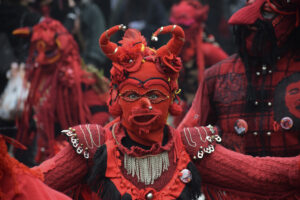
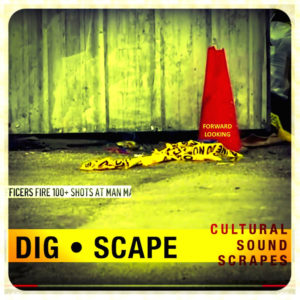
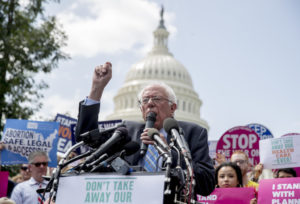

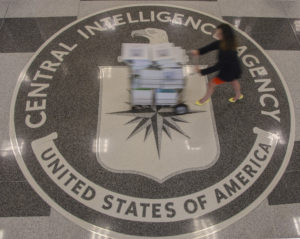
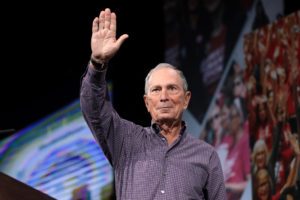


You need to be a supporter to comment.
There are currently no responses to this article.
Be the first to respond.